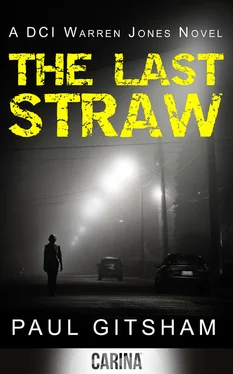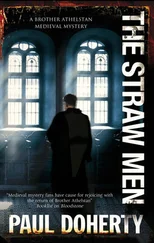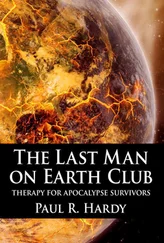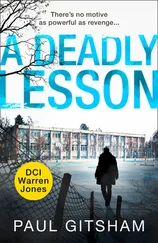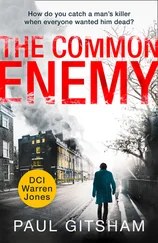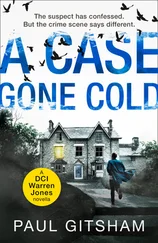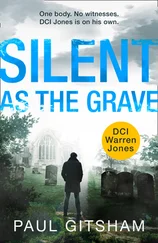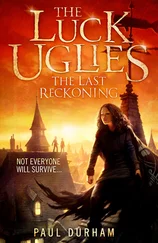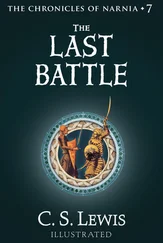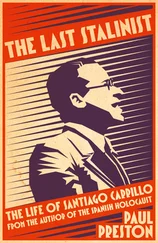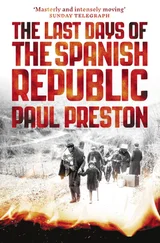Paul Gitsham - The Last Straw
Здесь есть возможность читать онлайн «Paul Gitsham - The Last Straw» — ознакомительный отрывок электронной книги совершенно бесплатно, а после прочтения отрывка купить полную версию. В некоторых случаях можно слушать аудио, скачать через торрент в формате fb2 и присутствует краткое содержание. Год выпуска: 2014, ISBN: 2014, Издательство: Carina, Жанр: Полицейский детектив, на английском языке. Описание произведения, (предисловие) а так же отзывы посетителей доступны на портале библиотеки ЛибКат.
- Название:The Last Straw
- Автор:
- Издательство:Carina
- Жанр:
- Год:2014
- ISBN:9781472094698
- Рейтинг книги:3 / 5. Голосов: 1
-
Избранное:Добавить в избранное
- Отзывы:
-
Ваша оценка:
- 60
- 1
- 2
- 3
- 4
- 5
The Last Straw: краткое содержание, описание и аннотация
Предлагаем к чтению аннотацию, описание, краткое содержание или предисловие (зависит от того, что написал сам автор книги «The Last Straw»). Если вы не нашли необходимую информацию о книге — напишите в комментариях, мы постараемся отыскать её.
The Last Straw — читать онлайн ознакомительный отрывок
Ниже представлен текст книги, разбитый по страницам. Система сохранения места последней прочитанной страницы, позволяет с удобством читать онлайн бесплатно книгу «The Last Straw», без необходимости каждый раз заново искать на чём Вы остановились. Поставьте закладку, и сможете в любой момент перейти на страницу, на которой закончили чтение.
Интервал:
Закладка:
Warren looked into space for a moment, his mind buzzing furiously.
“OK, playing devil’s advocate, maybe he did something else in there. Perhaps he was just on the skive, reading a magazine or something.”
“Sir, it was nine o’clock on a Friday night. The building was empty. It would be pretty unlikely that he would be found out if he was reading a magazine. And I’m sure he could have found somewhere else more comfortable to read. Besides which, there’s more.”
Warren raised an eyebrow. “Go on.”
“You said that he was wearing a face mask?”
“Yes, one of those sterile surgical masks. There was a box of them in the lab.”
“I don’t know why he would be wearing a mask. The chemicals used in PCR are harmless, certainly at that dose, so he wouldn’t have needed protecting.”
“Maybe it was to stop contamination of his samples — you know that Scenes of Crime Officers always wear them.”
“Possibly, but the thing is that, from what I understand, Tunbridge’s lab worked exclusively on bacteria. Any human DNA getting in the mix wouldn’t interfere with the reaction as it wouldn’t be recognised. Besides which, a few stray human cells with their DNA molecules locked away in the nucleus would be swamped by the pure bacterial DNA that he was probably using in his experiments. I rarely saw anybody wear masks when setting up standard PCR reactions. Some folks didn’t even wear gloves, although that’s frowned upon unless you have a latex allergy.”
Warren contemplated her for a long moment. “It’s an interesting thought, Karen, but it’s all very circumstantial. Maybe he was already wearing it because of something else he had been doing earlier. He already admitted that he had simply forgotten to remove his gloves.”
Karen nodded; she wasn’t a fool. “Well, I can only speak from personal experience, but I know that I hate wearing those face masks and can’t wait to take them off when I no longer need them.
“Regardless, they always told us in training that nothing is insignificant and that it’s your job to decide what’s important. Besides which, it’s not just those things. The timing doesn’t really add up. I don’t think he was in there long enough.”
“First you say he was in there too long, now you say not long enough. You can’t have it both ways.”
Karen flushed slightly. “That wasn’t what I meant, sir. I mean that if he was just popping in to set up his PCR reaction before leaving, he was in there far too long. But if he decided for whatever reason to see his program through to the end, he probably wasn’t in there long enough.”
“How long is long enough?”
Karen looked a little uncomfortable. “It’s hard to say, but I used to do a lot of PCR when I was a graduate student. The length of time needed varies a lot depending on what you are trying to achieve. And I have to point out that I did my masters degree a few years ago, and technology may have changed since then. But if my sums are reasonable, he was definitely in there too short a time.”
“OK, well, talk me through your reasoning.”
“First of all, sir, what do you know about PCR and DNA?”
“Probably a lot less than I should. I’ve heard the terms but, I’ll be honest, I don’t really understand them beyond how useful they have become to forensics. My wife is the biologist in the family, not me. Play it safe and assume I know nothing.”
“OK, let’s start with DNA.” Karen drew two parallel lines on the back of her notes. “As I’m sure you already know, the DNA molecule is composed of two strands, coiled around each other in a helix.” Warren nodded.
“Well, forgetting about the helix for a moment as it isn’t relevant, you can imagine DNA as like a ladder. Two vertical bits with rungs. Now imagine if you took your ladder and cut down the middle of each rung, leaving the half rungs sticking out of the vertical bit, a bit like a comb.”
Warren nodded again; Karen’s diagram made it clear.
“Unlike a ladder, however, each of those half-rungs is one of four different types of chemical called a base, referred to by their first letters, A, T, G and C. These four bases are like the letters of an alphabet and just like the way that the order of the twenty-six letters of the Roman alphabet can be arranged to provide an infinite number of different sentences, so can the four letters of DNA. The cell translates this code into the proteins that it needs to perform all of its jobs, in the same way that you translate the letters of the alphabet into a meaningful sentence.”
“With you so far. I remember this from a training course.”
“Well, remember that I said it was like a ladder, cut down the middle? Each of those rungs is made up of two bases joined together. However they can only join up in a particular way: A must always be joined to T and G must always be bound to C. So if you have a sequence of ATCG on one side of the ladder, then the opposite side of the ladder must be TAGC.”
To illustrate her point, Karen drew out the letters on the piece of paper
A T C G
T A G C
“We call each of these pairs a ‘base pair’. Humans have about three billion base pairs of DNA.”
“OK, I’ve got you. Now what is this PCR thing? I know it’s important in forensics, but I don’t see why Spencer would be using it — he works on bacteria.”
“Well, sir, first of all you have to remember that DNA is DNA. It doesn’t matter if it comes from humans, plants, bacteria, viruses or whatever, so PCR can be used on anything. But basically, the Polymerase Chain Reaction, or PCR, is a way of increasing the amount of DNA that you have to make more. What’s more it can be very specific, so that you only amplify the bit of DNA you are interested in and ignore the rest.”
“You’ll have to elaborate a bit more here, I’m afraid.”
“I’m sure you’ve seen shows like CSI where they take a single hair follicle and from that they are able to extract the DNA and perform loads of different tests?”
Warren snorted. The so-called ‘CSI effect’ had raised the public’s — and for that also read juries’ — expectations to unrealistic levels. The public expected results in hours rather than weeks and seemed to think that every crime scene, regardless of its triviality, should be subjected to thousands of pounds’ worth of DNA analysis.
He gestured for her to continue.
“Well, the fact is that in most samples the amount of DNA is minuscule; far too little for scientists to do anything meaningful with. So they need to make more of the DNA; millions of times as much. At the same time, they can make sure that they only make more of the DNA that they are interested in. In the human being, for example, scientists might only want to look at a thousand base pairs, so they only amplify that DNA, ignoring the remainder of the three billion base pairs.”
“OK, I can see why PCR is so important, but how long does it take?”
“That varies a lot, but I can do some estimates.”
Karen turned over another sheet of paper.
“The process has a number of steps. First you prepare all of the chemicals back in your lab and dispense it into tiny plastic tubes, which you can then carry down to the PCR machine in an ice bucket. Next you place the tubes in the PCR machine — more properly known as a thermo-cycler, because its job is to change temperature very rapidly. If you want to know how long Tom Spencer should have spent in the PCR room, this is when the clock starts.
“First step, is to heat the DNA to ninety-five degrees Celsius for about five minutes. This is enough to split the DNA ladder down the middle of the base pairs, leaving unpaired DNA bases sticking out like teeth in a comb.
Читать дальшеИнтервал:
Закладка:
Похожие книги на «The Last Straw»
Представляем Вашему вниманию похожие книги на «The Last Straw» списком для выбора. Мы отобрали схожую по названию и смыслу литературу в надежде предоставить читателям больше вариантов отыскать новые, интересные, ещё непрочитанные произведения.
Обсуждение, отзывы о книге «The Last Straw» и просто собственные мнения читателей. Оставьте ваши комментарии, напишите, что Вы думаете о произведении, его смысле или главных героях. Укажите что конкретно понравилось, а что нет, и почему Вы так считаете.
